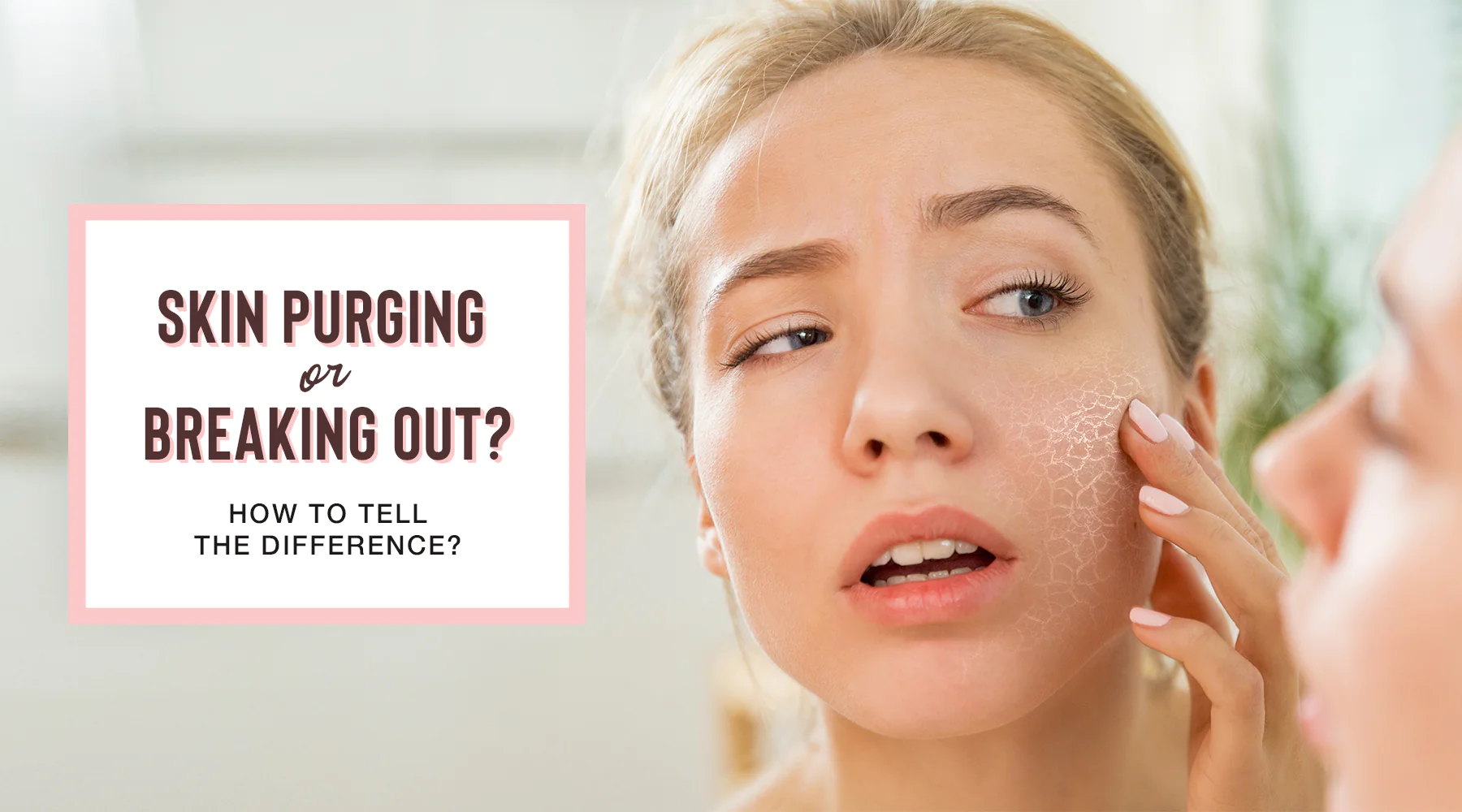When it comes to achieving radiant, flawless skin, the journey can often be a bumpy one. Sometimes, in the pursuit of clearer and healthier skin, you might experience a phenomenon known as “skin purging.” This process can leave you feeling perplexed and impatient, but it’s essential to understand that it’s a natural part of your skin’s renewal cycle. In this blog post, we’ll dive into the details of skin purging, what causes it, and how to differentiate it from a breakout. We’ll also explore ways to navigate this phase gracefully, so you can enjoy the radiant skin you’ve been dreaming of.
What is Skin Purging?
Skin purging is a temporary reaction that occurs when you introduce new skincare products or treatments into your routine. During this process, your skin may experience an initial flare-up of acne, blackheads, or whiteheads. It can be alarming, especially if you’re not prepared for it, but it’s crucial to understand that this reaction is a sign that your skin is adapting and renewing itself.
Why Does Skin Purging Occur?
Skin purging occurs due to a variety of reasons:
- Cell turnover: Skincare products that contain active ingredients like retinoids, alpha hydroxy acids (AHAs), and beta hydroxy acids (BHAs) can accelerate the shedding of dead skin cells. As these cells are sloughed off, they may trigger acne lesions that were already developing beneath the surface.
- Deep cleansing: Some products, such as exfoliants and masks, can draw impurities and sebum from deep within the skin, causing them to surface in the form of breakouts.
- Microcomedones: Tiny, imperceptible clogs in hair follicles, known as microcomedones, can develop well before they become visible blemishes. When you start a new skincare routine, these microcomedones may become inflamed and appear as pimples.
Differentiating Skin Purging from a Breakout
Distinguishing between a skin purge and a breakout is crucial to avoid making the wrong skincare choices. Here are some key differences:
- Timeline: Skin purging typically occurs within the first 4-6 weeks of using a new product or treatment. If the breakouts persist beyond this timeframe, it might be a genuine breakout.
- Location: Purging tends to occur in areas where you usually experience breakouts. If you notice new breakouts in entirely different areas, it might not be a purge.
- Type of acne: Purging is characterized by small, uniform pimples, blackheads, or whiteheads. If you experience larger, cystic acne, it’s likely a breakout.
How to Navigate Skin Purging
- Patience: The most important thing to remember during skin purging is to be patient. This phase is temporary and a sign that your skin is improving.
- Simplify your routine: Stick to a simple skincare routine with gentle cleansers and moisturizers. Avoid using too many new products simultaneously, as it can exacerbate purging.
- Sun protection: Protect your skin from the sun, as it can make purging worse and increase the risk of post-inflammatory hyperpigmentation.
- Consult a dermatologist: If you’re unsure whether you’re experiencing skin purging or a true breakout, or if the purging lasts longer than expected, it’s a good idea to consult a dermatologist for personalized guidance.
Conclusion
Skin purging may seem like a roadblock in your quest for perfect skin, but understanding the science behind it and learning how to differentiate it from a breakout can make the journey much smoother. Embrace the process, be patient, and remember that clear, radiant skin is just around the corner. By arming yourself with the right knowledge and skincare practices, you’ll soon reap the benefits of your skincare routine and enjoy the healthy, glowing skin you’ve always desired.
